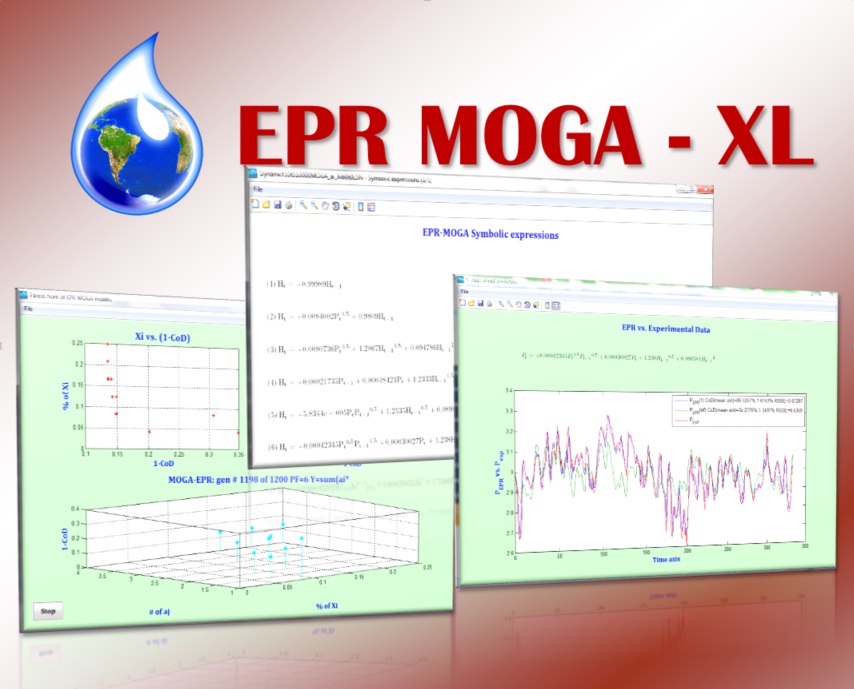
The availability of large and detailed databases together with the increased computational capabilities has motivated researchers to propose innovative techniques and methodologies to mine information from data. The Evolutionary Polynomial Regression (EPR) [Giustolisi and Savic (2006)] has been introduced in the hydroinformatics community as a hybrid data-driven technique, which combines the effectiveness of genetic algorithms with numerical regression for developing simple and easily interpretable mathematical model expressions. The multi-objective search paradigm has been introduced [Giustolisi and Savic (2009)] for developing multiple models by simultaneously optimizing fitness to training data and parsimony of resulting mathematical expressions. Such improvement allows for a sudden understanding of existing patterns in data
.png)




